Exploring Cornwall
Short article about Cornwall for senior couple and mature solo travelers on a escorted small group tour of England. Join a discovery or a walking tour to learn more about St Michael's Mount, Tintagel the Scilly isles or Penzance within Cornwall.
18 Jul 21 · 7 mins read
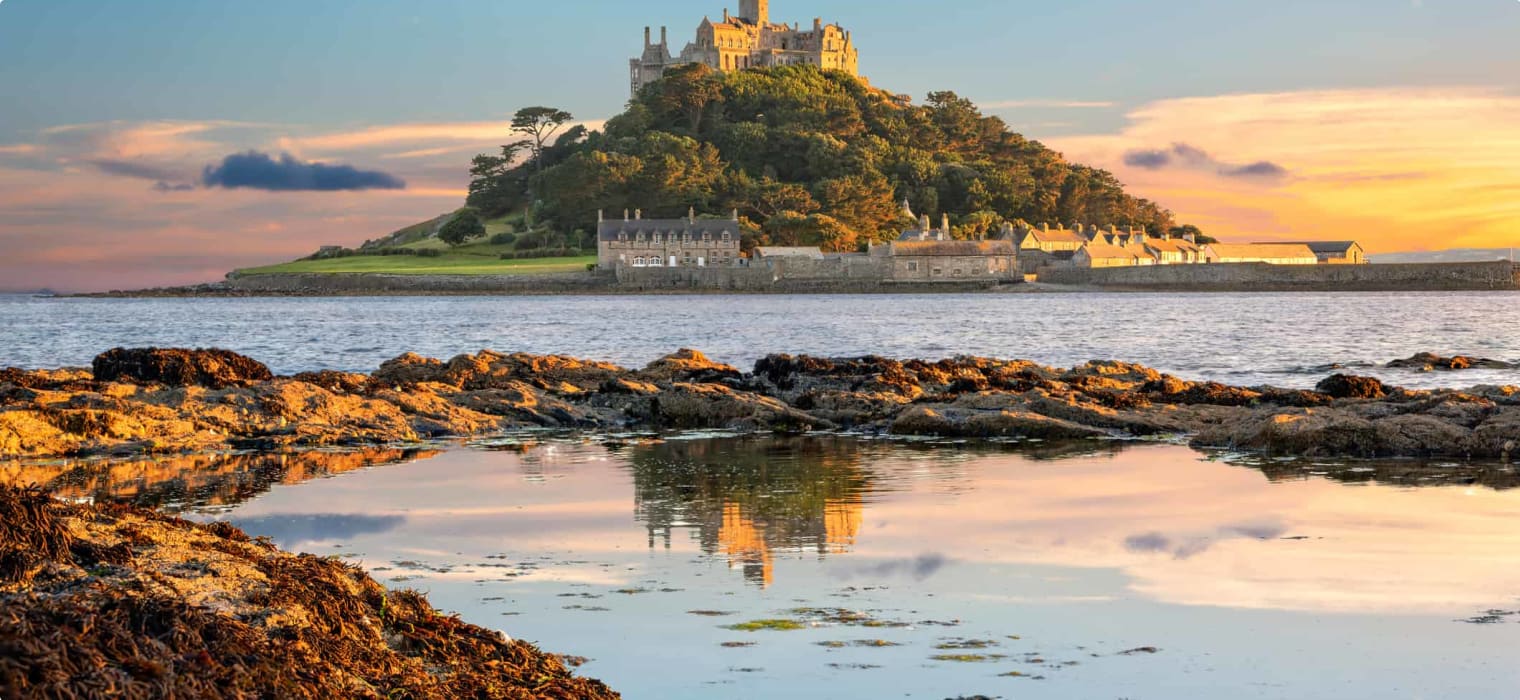
Join Odyssey Traveller on this tour of the West Country of England and the fascinating areas of Somerset, Devon and Cornwall. This is an escorted small group tour for mature and senior travellers who are travelling with partners or as a solo traveller. This is a journey filled with stories of wreckers and ship wrecks, smugglers, pirates, medieval treasures, charming fishing villages along the Cornish coast, stunning cliff-top coastal views of the blue Atlantic, castles and romantic destinations traditionally linked to the legends of King Arthur, and the delights of ‘cream teas’ and Cornish pasties.
The tour starts and ends in Bristol, which is situated on the River Avon in South West England, and was once a medieval trade centre and busy maritime port for explorations into the New World. Bristol is a great first stop for our adventure as we travel west and south, even venturing beyond the Cornish coast and across the Atlantic to the Isles of Scilly.
This article concentrates on the locations visited on the tour through Cornwall.
About Cornwall
Located on a peninsula winding southwest into The Atlantic Ocean, Cornwall is among England’s most culturally and geographically distinct regions. The scenery here is spectacular and varied, ranging from windswept moors to England’s best (and warmest) beaches, craggy cliffs to verdant subtropical gardens.
Cornwall
Cornwall is the most remote of English counties. Its eastern boundary, on the River Tamar, is some 320 km distant from London. Cornwall’s westernmost town, Penzance, lies another 130 km farther from London and close by Land’s End, the traditional southwestern extreme of Great Britain. The Isles of Scilly lie an additional 56km southwest of Penzance in the Atlantic Ocean.

During the early Stone Age period, there was little sign of human habitation in Cornwall, although there are signs of occasional visitors from elsewhere. The Mesolithic era – the Middle Stone Age from about 10,000 BC- was the end of the last glacial period when water levels began to rise. Hunter-gatherers began to settle around the coastline of Cornwall and evidence can be found around the Lizard, for example, and on upland areas such as Bodmin Moor.
Between 4,000 and 2,500 BC in the Neolithic or new Stone Age there was great social and agricultural development. Farming began and there was increased monument construction, as the population increased. Settlements began to be fortified.
The Early Bronze Age between 2,400 and 1,500BC saw the introduction of metal working. The use of bronze exploited Cornwall’s natural resources of tin and copper. These metals were found by tin-streaming and open-cast mining. During this period there were many more ceremonial and burial monuments: the stone circles, rows and standing stones or menhirs, and the barrows with their “cist graves” hollowed out of stone or timber.
From 1,500 – 600 BC during the Late Bronze Age, the climate became wetter causing movement of the settlements to lowland sites such as Trethellan, Newquay. The nature of farming changed to less intensive grazing on the uplands. As a result, a more warlike society evolved which often sacrificed weapons to their gods. Although it has long been believed that the first Brythonic Celts (ie, from Gaul or France, and not from Spain or Portugal) arrived in Britain around 600BC, some recent scholarship suggests this possibly happened as early as 2000 BC. Today Cornwallis recognised as one of the six Celtic nations, along with Ireland, Wales, Scotland, Brittany, and the Isle of Man
Iron gradually replaced bronze for weapons and farming tools during the Iron Age from 600 BC to 43AD. People started to live in defended settlements known as rounds which were bank-and-ditch enclosures around a number of round-houses. Economic and social centres, for manufacturing and trading, were established on hill-tops and headlands, such as Trevelgue Head, near Newquay.
During the late 1st century AD, Roman military occupation of Britain began. At this time the part of Britain annexed by Rome was divided among various tribes. The south west was occupied by the Dumnonii, Iron Age Celts who had been in the area for centuries. The rural society in Cornwall was largely unchanged by the Roman influence. Trade in tin increased during the 3rd and 4th centuries AD, not only for bronze, but also to combine with lead for pewter objects. Courtyard houses appeared at this time in villages such as Chysauster, Penzance.
During the 6th and 7th centuries there was an English invasion of Cornwall. This was the period of Arthur, Doniert & other Celtic kings including King Mark. It was also known as The Age of the Saints.
Many legends associate King Arthur with Cornwall. He was said to have been born in Tintagel, at the home of Gorlais, Earl of Cornwall. It was here that Uther Pendragon seduced Igerna or Igraine, Arthur’s mother. The castle ruins at Tintagel are 11th century, but there are signs of a much earlier settlement. There is a cave below the castle known as Merlin’s Cave as the magician is said to haunt it. Arthur is said to be reincarnated as a Cornish chough.
King Mark was said to have lived at Castle Dore, Fowey. Legend says that Mark sent his nephew, Tristan, to Ireland to bring back the fair Iseult to be Mark’s queen. However the young couple accidentally swallowed a love potion and fell passionately in love. Iseult married Mark and the story inevitably had a tragic ending. It is interesting that this story parallels the story of King Arthur sending his most loyal knight, Lancelot du Lac, to collect his new bride Guinevere from her home in Scotland. They, too, fall in love with tragic consequences.
In 577, the Battle of Deorham Down near Bristol resulted in the separation of the Cornish (known as the West Welsh) from the Welsh by the advance of the Saxons. By this time, the Saxons had destroyed the remains of Roman civilisation and it was almost forgotten in the west. The Saxons were established and they were converting their conquests to Roman Christianity. Not long after this the earliest Christian church opened at St. Piran’s Oratory.
St Piran became the patron saint of Cornwall and of tin miners. His flag is a white cross on a black background. St Piran’s Day is celebrated on March 5th. He is the most famous of the Irish saints who came to Cornwall and is said to have discovered tin and to have founded the monastery of Clonmacnois. Legend says the heathen Irish tied him to a mill-stone, rolled it over the edge of a cliff into a stormy sea, which immediately became calm. The saint floated safely over the water to land upon the sandy beach of Perranzabulo in Cornwall, where his first converts were animals.
In 936 Athelstan’s (King of the Anglo-Saxons and then King of England) settlement had fixed the east bank of the River Tamar as the boundary between Anglo-Saxon Wessex and Celtic Cornwall. The river still marks the division between Cornwall and Devon.
The county’s isolation aided the survival of the Celtic language known as Cornish, although it has not been spoken as a living language since the 18th century. Celtic place-names are much in evidence. After the Norman Conquest (1066) the indigenous manors of Cornwall were taken over to form the basis of an earldom; since 1337 they have belonged traditionally to the eldest son of the English sovereign, who acts as duke of Cornwall – currently Prince Charles.
Tin was mined in Cornwall for at least 3,000 years. Since ancient times, Cornwall has been closely linked to the outside world, thanks to the export of tin. Historians suggest that Cornish tin powered the advancements of the Bronze Age, as tin was necessary to the smelting of bronze. In the Classical Era, tin from Cornwall reached the Mediterranean, while the Early Middle Ages saw tin exchanged for luxury goods from North Africa and the Middle East. In the 19th century, tin mining expanded rapidly, as the Industrial Revolution allowed for mining deep under the ground. . Despite periodic depressions in the industry, Cornish tin mining continued profitably until the 20th century, when the shallow tin deposits were exhausted and the deeper and more costly workings fell victim to cheaper foreign tin production. The number of working mines dwindled, and, with the world collapse of tin prices in the 1980s, the last few tin mines in Cornwall were allowed by the British government to close. In 2006 the copper and tin mines in Cornwall and West Devon were designated a UNESCO World Heritage site. Kaolin, the product of eroded granite, is still mined around St. Austell and used to make medicine to stop bleeding and diarrhoea.
Cornwall was also closely associated with pirates in the Early Modern Period, inspiring The Pirates of Penzance. The Cornish were often accused of the villainous practice of luring ships to the cliffs to be wrecked and so their cargo could be salvaged. This has since been disproved, but those who lived along the coast of Cornwall assumed the rights to salvage goods from wrecked ships. In the past, Cornwall was a centre for smuggling of illegal contraband such as brandy, port and gin to avoid excise. Smuggling was an acknowledged Cornish pastime and reached its peak during the 18th century. At one time the Isles of Scilly were totally reliant on the smuggling trade. The only legal business was fishing, but at best that was seasonal. Mousehole is one of the many west Cornwall villages steeped in smuggling history.
The Cornish in Australia. There was a Cornishman who travelled to Australia with Captain James Cook and at least two convicts from Cornwall on the First Fleet. Cornish Australians are thought to make up around 4.3 per cent of the Australian population and are thus one of the largest ethnic UK groups in Australia and as such are greater than the native population in the UK of just 532,300. The Australian gold rush commenced at Ophir in May 1851, quite close to the Cornish Settlement, whose official name was Byng (on the Great Western Highway between Bathurst and Orange). These Cornish miners formed the first mining union in Australian and Cornish miners were instrumental in the formation of the Australian Labor Party.
Related Articles

10 Books to Read If You Are Planning to Visit Britain
10 Books to Read If You Are Planning to Visit Britain For Odyssey Travellers, Britain has and remains a key destination in the organisation’s collection of escorted small group educational tours offered each year. For…

A Journey Through Britain's Roman Roads
Rome's roads constitute the most remarkable culmination of its technological, logistical and bureaucratic achievements. Even a brief understanding of their history and significance can enrich your experience walking tour of Britain.
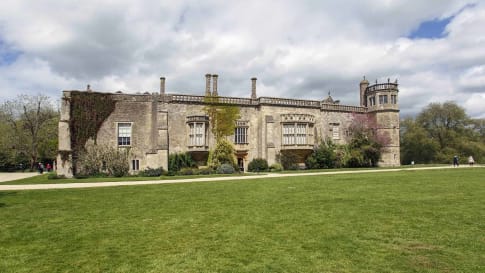
Britain’s National Trust role for successful small group history tours
Britain’s National Trust: Historic houses, gardens and natural wonders Britain is home to many attractions, many of them rich in the region’s history. Sites and artefacts are preserved beautifully, and […]
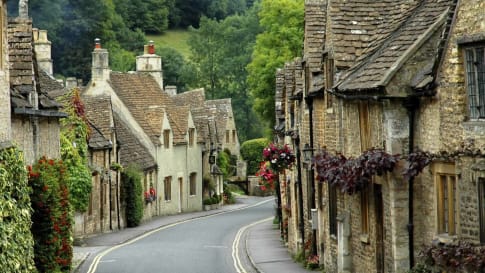
English Village History
An English Village history. Prepared for mature and senior travellers, couples or solo traveller considering joining a small group tour of England's villages.

Exploring Devon
Article about Devon for senior and mature small group tours couple and solo travellers interested in stone circles, the Romans or English history including the Industrial revolution.
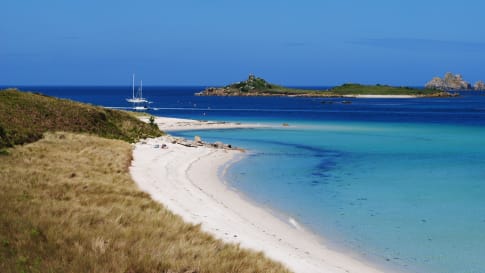
Isles of Scilly, England
The Scilly isles form part of a day trip on the escorted small group tour of Devon and Cornwall for seniors and mature travellers. Whilst on this tour the group also visit St Michaels Mount, Penzance, Glastonbury and Tintagel.

Newquay, England
Newquay, part of the heritage of Devon and Cornwall is explored on an Educational small group tour for senior couples and mature solo travellers seeking to learn about ancient Britain through to the Victorian era.

Penzance, England
Penzance Article for senior couples and mature solo travellers seeking to explore Devon and Cornwall. Explore our range of Educational small group tours.
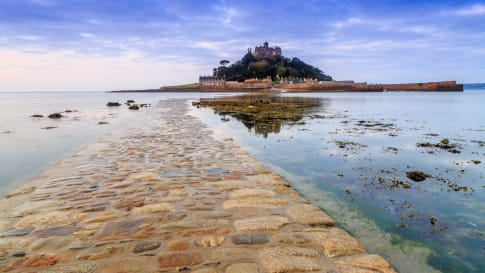
St Michael's Mount, England
The counterpart to Mont St Michel. On the Devon and Cornwall escorted small group tour for senior and maturer travellers the group learn about the abbey of St Michael's mount built in the middle ages complete with gargoyles and grotesques.
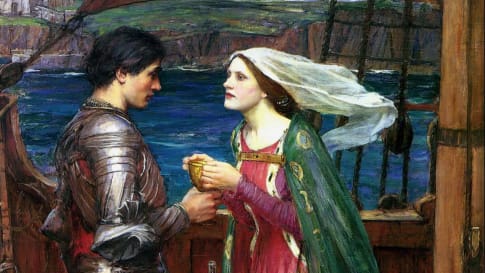
Tintagel, England
Tintagel, article explores the place in Cornwall that encourages the senior couple or mature solo traveller on a small group tour to follow the legend of King Arthur.

Touring England's villages
Touring England’s villages For many travellers, London is synonymous with England. This lively, cosmopolitan capital is a must see, of course, but there is more to England than booming cities and industrial centres. Instead, what…

Understanding British Churches: The Definitive Guide for Travellers
British Churches Through the Years “How old is this church?” asks Mary-Ann Ochota in a chapter of her book, Hidden Histories: A Spotter’s Guide to the British Landscape (Francis Lincoln, 2016, p. 250). In this article, we…
Related Tours

17 days
Sep, AprBhutan | Small Group Cultural Tour
Visiting Bhutan
An unhurried ocean of calm in a crowded continent, Bhutan is scenically magnificent. Join our small group escorted tour and walk up the mountain to the famous Tiger's Nest monastery. The Bhutanese will welcome you to share their distinctive culture, unpolluted environment, and colourful festivals.We explore centuries of Buddhist tradition inherited from Tibet that have shaped this land with art, dance, music, and even medicine shaped by religion.
From A$13,695 AUD
View Tour
10 days
SepNamibia Wildlife and Culture Tour for Seniors
Visiting Namibia
A small group tour for seniors and couples to Southern Africa for couples and solo travellers. Namibia shares borders with Angola and Zambia to the north, Botswana to the east and South Africa to the south and east. Wedged between the Kalahari and the South Atlantic, Namibia is home to the oldest desert of the earth. Despite its parched reputation, Namibia is one of the world’s best wildlife destinations.
From A$11,695 AUD
View Tour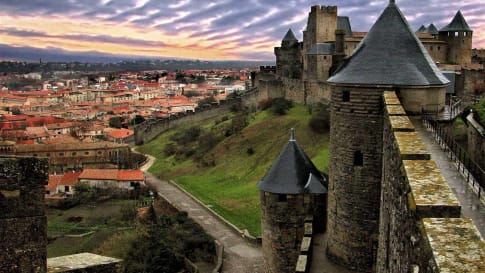
11 days
SepLa Belle France Small Group Short Tour
Visiting France
On this small group tour of France, we visit several culturally significant and picturesque regions of France, including Provence, Champagne, Burgundy. We learn about each region's history from expert local guides with a chance to experience the local culture, and taste the regional cuisine.
From A$11,875 AUD
View Tour
22 days
Sep, Apr, MarHeritage, Culture and History of Italy | Small Group Tours for Seniors
Visiting Italy
Rome, the world’s first superpower, lasted for almost a thousand years. In this small group tour for senior couples and solo travellers we thread our way through the Rome of the Emperors, then through the Italy of the Renaissance, Michelangelo, the Medici, and the Borgia. In the south, we visit the cosmopolitan city of Naples as well as Pompeii and the island retreat of Capri.
From A$13,695 AUD
View Tour
9 days
AugEdinburgh Festival Fringe Small Group Tour
Visiting Scotland
One of the few European tour companies to have in Scotland an escorted small group tour of Edinburgh during the fringe festival. As well attending performances, this trip includes time to experience, the old town, new town and the royal mile, a UNESCO world heritage site plus Edinburgh Castle and Palace of Holyroodhouse.
From A$7,215 AUD
View Tour
10 days
Oct, JanNorthern Lights Small Group tour | Visit Norway and Finland
Visiting Finland, Norway
Odyssey's small group tour following the Northern Lights allows you to experience serene snow-covered Arctic landscapes. Throughout our journey guides and specialists will outline the history of this stark region and the nature of the peoples who wrested their living from it. A unique opportunity to view this natural phenomenon travelling as part of a small group.
From A$9,625 AUD
View Tour
17 days
May, SepIceland cultural and wilderness small group tour
Visiting Iceland
Our escorted tour gives guests an insight into the history of this Icelandic nation. Travelling as a small group, our daily itineraries explore the Jokulsarlon Glacier Lagoon and others, national parks and majestic waterfalls as we learn about Iceland’s natural heritage and its Viking past from experienced local guides. There is a single supplement for solo travellers.
From A$18,995 AUD
View Tour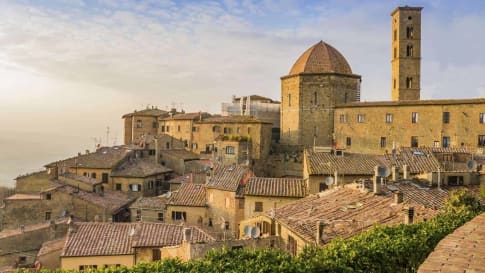
26 days
Aug, SepVillages of Italy | small group tours Italy
Visiting Italy
Explore Italy in a small group tour. Italy is the most Mediterranean of nations and as mature and aged as many of its red wines. In terms of being a nation, it is even younger than New Zealand. This is often hard to believe, bearing in mind that Italy gave rise to Europe’s first global empire, which endured for approximately 2,000 years, the Romans. The new constantly brushes with the old and in doing so generates sparks that makes any sojourn in Italy a deeply textured experience.
From A$16,775 AUD
View Tour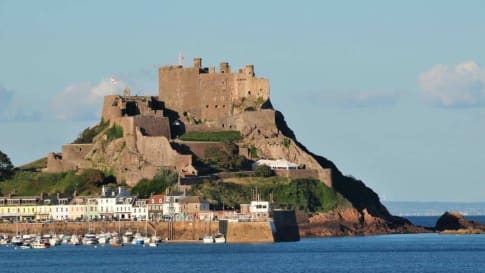
18 days
Sep, MayChannel Islands | A small group walking tour for seniors
Visiting Channel Islands
Another Small group tour of the British isles of the Channel Islands. This fully escorted, small group walking tour, takes the active senior off the beaten path with local guides to Jersey, Guernsey, Alderney, Sark and Herm.
From A$15,535 AUD
View Tour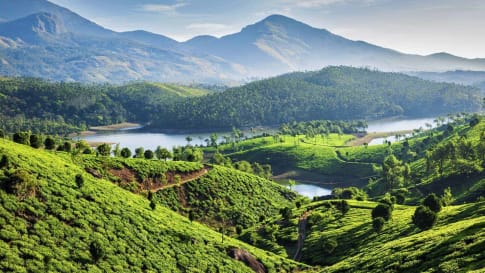
22 days
Nov, MarCultural and History Tour of India | Small Group Tour
Visiting India
Small group tour for mature and senior couples and solo travellers to India. Visiting Delhi and the red fort, Jaipur, Agra and so much more over 22 days explore the world of the Mughal.
From A$12,300 AUD
View Tour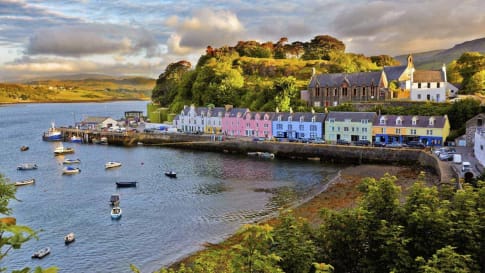
20 days
May, Jul, Aug, SepScottish Islands and Shetland small group tours for seniors
Visiting Scotland
An escorted small group tour for couples and solo travellers of the Scottish isles including the isle of Skye draws on local guides to share their knowledge of the destinations in this unique part of Scotland. UNESCO world heritage site are visited as breathtaking scenery and authentic experiences are shared in a group of like minded people on this guided tour of remote Scotland.
From A$17,525 AUD
View Tour
23 days
Sep, MayProvincial France | Small Group Tour for Seniors
Visiting France, Switzerland
This small group program explores the remote mountain plateaux, perched villages and dramatic gorges as well as the Mediterranean coastline.Travel with like-minded people on this tour especially designed for the mature traveller. The villages of Alsace provide an introduction to the diversity which is France. In Burgundy we explore the local villages. Then onto the Jura Mountains, a region rarely visited by tourists. Finally, Provence and the Côte d’Azur, regions of inspiration for artists such as Van Gogh, Cézanne and Picasso.
From A$17,215 AUD
View Tour

